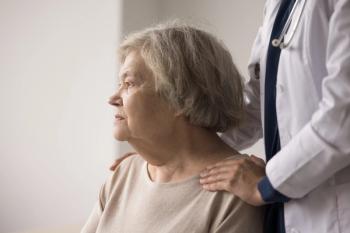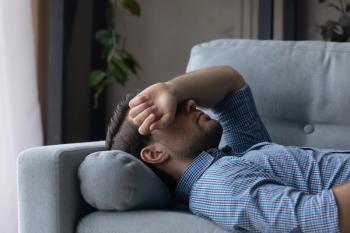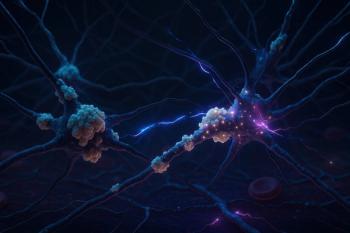
- Vol 31 No 4
- Volume 31
- Issue 4
Additions to Our Sleep Armamentarium
What's new in sleep medicine? The latest developments in both new and novel approaches to treating sleep disorders.
[[{"type":"media","view_mode":"media_crop","fid":"23345","attributes":{"alt":"","class":"media-image media-image-right","id":"media_crop_1773185567471","media_crop_h":"0","media_crop_image_style":"-1","media_crop_instance":"1823","media_crop_rotate":"0","media_crop_scale_h":"0","media_crop_scale_w":"0","media_crop_w":"0","media_crop_x":"0","media_crop_y":"0","style":"margin: 5px; float: right;","title":" ","typeof":"foaf:Image"}}]]There has been quite a lot of activity in the field of sleep medicine with the development of new pharmacokinetic and pharmacodynamic approaches to treating sleep disorders. Over the past few years, the FDA has approved several new products with indications for insomnia, excessive sleepiness,
The most recent new medication is tasimelteon, which was approved by the FDA early in 2014 with an indication for treating the non–24-hour sleep-wake rhythm disorder, a type of circadian rhythm disorder. Tasimelteon was developed specifically for totally blind individuals who are unable to achieve normal 24-hour entrainment with the photoperiod and consequently have a free-running circadian cycle.
People with this disorder are challenged by trying to live 24-hour lives with body clocks on longer cycles. They may be synchronized with the day-night cycle and are able to sleep well at night and feel alert during the daytime. Gradually their cycles drift later, to the point where they are 180 degrees out of synchronization and have difficulty with nighttime insomnia and daytime sleepiness. They then cycle back, and the pattern repeats over and over with a periodicity of weeks or months.
Tasimelteon, an agonist of the melatonin receptors, taken at the same time each evening helps stabilize the circadian system at 24 hours to promote more consistent nighttime sleep and daytime alertness. It will be available as a 20-mg capsule.
There have been pharmacokinetic and pharmacodynamic developments among the FDA-approved medications for RLS. The pharmacological approach has been with the dopamine agonists pramipexole and ropinirole. Now there is a 24-hour transdermal patch of rotigotine; it is available in 6 strengths: 1, 2, 3, 4, 6, and 8 mg. For patients with RLS, the recommended dosage is up to 3 mg daily. Gabapentin has been a treatment option for RLS for many years; the FDA approved an extended-release formulation-gabapentin enacarbil-available in 300and 600-mg tablets.
The primary medications prescribed for
The two most recent pharmacodynamic additions to the FDA approved insomnia medications were a melatonin receptor agonist (ramelteon-indicated for sleep-onset insomnia) and a selective histamine H1 receptor antagonist (low-dose doxepin-indicated for sleep maintenance insomnia). Other novel compounds have been investigated as possible
One strategy in promoting sleep in patients with insomnia is the use of an orexin antagonist. The orexin (hypocretin) system, discovered only in the late 1990s, plays a critical role in the regulation of the sleep-wake cycle. Two orexin proteins (orexin A and orexin B) are produced in hypothalamic neurons with widespread brainstem and cortex projections. These proteins interact with 2 orexin receptors (OX1R and OX2R) that have overlapping distributions. Orexin activity stimulates and stabilizes wakefulness. Accordingly, antagonist compounds would have the potential to promote sleep.
Clinical trials are under way with single orexin receptor antagonists (SORAs) and dual orexin receptor antagonists (DORAs). The DORA suvorexant is the one compound in this class that has made its way to an FDA evaluation. The drug initially was not approved at the proposed dosages, but it may be approved with an insomnia indication at lower dosages.
The treatment of excessive sleepiness is a clinical challenge. Modafinil and armodafinil are FDA-approved for treating excessive sleepiness associated with narcolepsy,
Near the top of a sleep medicine wish list would be a pill to treat the fundamental cause of obstructive sleep apnea-upper airway collapsibility. Some compounds have demonstrated limited benefits but none so far has had reliable efficacy. Fortunately, there are very effective nonpharmacological treatments, including some novel investigational devices that may be approved for treating sleep apnea in the future.
No doubt, further knowledge of the regulation of sleep and wakefulness and advances in the understanding of the pathophysiology of sleep disorders will highlight new pharmacological targets and stimulate new clinical investigation. In the meantime, we should continue to identify sleep disorders among our patients. There are many effective nonpharmacological treatments that complement a rather diverse pharmacopeia at our disposal.
This article was originally posted online on 3/13/2014 and parts of the article have been updated.
Disclosures:
Dr Neubauer is Associate Professor in the Department of Psychiatry and Behavioral Sciences at Johns Hopkins Medicine in Baltimore, MD. He is a consultant for Vanda Pharmaceuticals and Novo Nordisk.
Articles in this issue
over 11 years ago
Tips for Conducting Disability Evaluationsover 11 years ago
Pain, Opioids, and Psychiatristsover 11 years ago
Ketamine Anesthesia for Electroconvulsive Therapyover 11 years ago
Chronic Traumatic Encephalopathy: Should We Be Worried?over 11 years ago
Epilepsy and Seizures: Neuropsychiatric Implicationsover 11 years ago
Management of Psychosis in Parkinson Diseaseover 11 years ago
Computerized Neurocognitive Tests in Clinical Practiceover 11 years ago
What Is the Role of Vitamin D in Depression?over 11 years ago
Clinical Assessment of Dysexecutive SyndromesNewsletter
Receive trusted psychiatric news, expert analysis, and clinical insights — subscribe today to support your practice and your patients.














